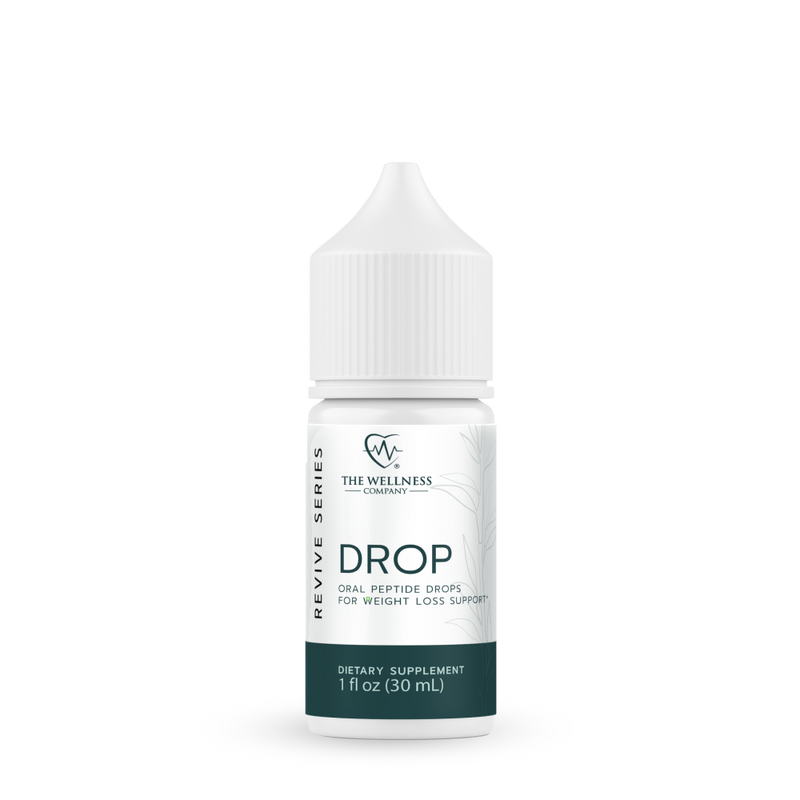Save $16,000 - Make Your Own Wegovy

List price of Wegovy is over 16,000 dollars annually
In the quest to achieve ideal weight, many are turning to pharmaceuticals designed for weight loss. These drugs, however, come with some serious side effects. With 70% of the US population overweight or obese, drug companies have found a lucrative niche.
A look at semaglutide- Ozempic and Wegovy
Wegovy is the same drug as Ozempic (a drug used for the management of type 2 diabetes), but at a higher dose. (Ozempic- 2.0 mg, Wegovy 2.4 mg) It is an injectable drug used for weight loss. Semaglutide is a class of medications called GLP-1 agonists. GLP agonists haven’t been around long. The first GLP-1 agonist, exenatide, was approved for use by the FDA in 2005. (1)
How GLP-1 agonists work
GLP-1 agonists mimic the action of a hormone called glucagon-like peptide 1 (GLP-1). When blood sugar levels start to rise after eating, these drugs stimulate the body to produce more insulin. The extra insulin helps lower blood sugar levels. (2)
What is GLP-1 and how does it work
The exact mechanism in which GLP-1 works is still being studied. It involves a complex interaction between the gut, pancreas, vagus nerves, brain, nervous system, and more.
GLP-1 is not just a hormone that keeps you from feeling hungry and unable to eat because of delayed gastric emptying. This hormone is manufactured in many parts of the body and interacts with not just the gastrointestinal system, but also protects the heart, decreases inflammation, and more.
Glucagon-like peptide-1 (GLP-1) is an incretin (a gastrointestinal hormone that increases insulin release from pancreatic beta cells) that aids in digestion, insulin production, and blood glucose control. It is secreted by the small intestine and pancreatic islet cells, in response to consuming glucose, and coordinates gastric emptying and signals satiation. It is believed that GLP-1 is reduced in patients with type 2 diabetes. Of note is that GLP-1 is also produced in certain parts of the brain. (3,4)

Gut-Brain interaction
The vagus nerve, AKA the “wandering nerve” plays an intimate part in how GLP-1 acts in the body. (the vagus nerves are the main nerves of your parasympathetic nervous system, one of the 12 cranial nerves). This system controls body functions such as digestion, heart rate, and immune system. It also signals the brain when satiated and plays a part in gastric juice production and how fast the stomach empties its contents through GLP-1 and vagus nerve interaction. GLP-1 inhibits vagal activity by stimulating the sympathetic nervous system. (5)
Wegovy and serious side effects

Along with the warning about thyroid cancer listed on their website, Wegovy has some very serious side effects.
Common side effects include nausea, diarrhea, vomiting, constipation, stomach pain, headache, tiredness, dizziness, bloating, belching, heartburn, runny nose, or sore throat.
Serious side effects include: (6)
- Inflammation of the pancreas (pancreatitis)
- Gallstones
- Low blood sugar
- Kidney problems - the risk of dehydration
- Increased heart rate
- Depression or thoughts of suicide
- Diabetic retinopathy- by rapidly reducing blood sugar- if diabetic- diabetic retinopathy can worsen
And one of the most famous side effects of both Wegovy and Ozempic-
Gastroparesis- “stomach paralysis” of which there are lawsuits against Novo Nordisk, the manufacturer of Wegovy. The lawsuits have recently been consolidated into a multidistrict litigation (MDL) in one district court.
Gastroparesis

Symptoms include nausea, vomiting, stomach pain, or inability to empty stomach contents into the small intestine. It can lead to a high risk of malnutrition and affect blood sugar levels.
For the stomach to empty contents (called gastric motility), there needs to be a balance of nerve impulses, which are mostly initiated through vagus innervation. A complex set of nerve impulses allows food to move through the stomach, allow the pyloric valve to relax and open, which allows the food to move to the next stage of digestion- in the small intestine. It is in the small intestine that most of our nutrition is extracted. That’s why when there is delayed gastric emptying, the food can harden into a mass called a bezoar, causing obstruction and an overgrowth of bacteria. The overgrowth of bacteria is called dysbiosis, a condition in which the gut microbiota is altered. Surgery is often required if this happens. (7)
Avoid Wegovy rebound- make your own semaglutide
Your body has its own semaglutide manufacturing ability- without the serious side effects
Bacteria In your gut use polyphenol and fiber-rich foods to manufacture hormones that control your appetite and metabolism. One of these is a natural version of GLP-1.
Aim for whole grains, vegetables, fiber-rich foods, and lean proteins to enhance the production of GLP-1.
Modern processed foods remove the fiber and nutrition made to manufacture these hormones.
Wegovy rebound is a real thing. In addition to its costly price tag of $1,342 a month, studies show that once people stop taking Wegovy, they gain two-thirds of the weight they had lost. (8)
Peak Metabolism - a little help from nature


Contains natural herbs and ingredients that work synergistically to help with weight management, including
- Berberine and bitter melon, both of which induces GLP-1 secretion (9,10)
- And Banaba leaf which studies have shown to reduce blood sugar levels (11)
References
- Drucker, D. J. (2024). The GLP-1 journey: from discovery science to therapeutic impact. Journal of Clinical Investigation, 134(2), e175634. https://doi.org/10.1172/JCI175634
- Castro, M. R. (n.d.). Do any diabetes drugs help you lose weight? Mayo Clinic. https://www.mayoclinic.org/diseases-conditions/type-2-diabetes/expert-answers/byetta/faq-20057955
- Müller TD, Finan B, Bloom SR, D'Alessio D, Drucker DJ, Flatt PR, Fritsche A, Gribble F, Grill HJ, Habener JF, Holst JJ, Langhans W, Meier JJ, Nauck MA, Perez-Tilve D, Pocai A, Reimann F, Sandoval DA, Schwartz TW, Seeley RJ, Stemmer K, Tang-Christensen M, Woods SC, DiMarchi RD, Tschöp MH. Glucagon-like peptide 1 (GLP-1). Mol Metab. 2019 Dec;30:72-130. doi: 10.1016/j.molmet.2019.09.010. Epub 2019 Sep 30. PMID: 31767182; PMCID: PMC6812410.
- Daimon, D., & Mietlicki-Baase, E. G. (2019). Glucagon-Like Peptide 1 in the Brain: Where Is It Coming From, Where Is It Going? Diabetes, 68(1), 15-17. https://doi.org/10.2337/dbi18-0049
- Andrews CN, Bharucha AE, Camilleri M, Low PA, Seide BM, Burton DD, Nickander KK, Baxter KL, Zinsmeister AR. Effects of glucagon-like peptide-1 and sympathetic stimulation on gastric accommodation in humans. Neurogastroenterol Motil. 2007 Sep;19(9):716-23. doi: 10.1111/j.1365-2982.2007.00923.x. PMID: 17727392; PMCID: PMC2538797.
- (2024). New studies reveal link between GLP-1 drugs and gastroparesis: A reversible and expected side effect. https://www.healthline.com/health-news/ozempic-wegovy-stomach-paralysis-risk
- Cleveland Clinic. (2023, March 20). Gastroparesis: Symptoms, causes, diagnosis & treatment. https://my.clevelandclinic.org/health/diseases/15522-gastroparesis
- Weight regain and cardiometabolic effects after withdrawal of semaglutide: The STEP 1 trial extension John P. H. Wilding D.M, Rachel L. Batterham MBBS, Melanie Davies M.D, Luc F. Van Gaal M.D, Kristian Kandler M.D, Katerina Konakli PhD, Ildiko Lingvay M.D, Barbara M. McGowan M.D, Tugce Kalayci Oral MD, Julio Rosenstock M.D, Thomas A. Wadden Ph.D, Sean Wharton M.D, Koutaro Yokote M.D, Robert F. Kushner M.D, First published: 19 April 2022https://doi.org/10.1111/dom.14725
- Araj-Khodaei M, Ayati MH, Azizi Zeinalhajlou A, Novinbahador T, Yousefi M, Shiri M, Mahmoodpoor A, Shamekh A, Namazi N, Sanaie S. Berberine-induced glucagon-like peptide-1 and its mechanism for controlling type 2 diabetes mellitus: a comprehensive pathway review. Arch Physiol Biochem. 2023 Nov 3:1-8. doi: 10.1080/13813455.2023.2258559. Epub ahead of print. PMID: 37921026.
- Chang CI, Cheng SY, Nurlatifah AO, Sung WW, Tu JH, Lee LL, Cheng HL. Bitter Melon Extract Yields Multiple Effects on Intestinal Epithelial Cells and Likely Contributes to Anti-diabetic Functions. Int J Med Sci. 2021 Feb 24;18(8):1848-1856. doi: 10.7150/ijms.55866. PMID: 33746602; PMCID: PMC7976585.
- Miura T, Takagi S, Ishida T. Management of Diabetes and Its Complications with Banaba (Lagerstroemia speciosa L.) and Corosolic Acid. Evid Based Complement Alternat Med. 2012;2012:871495. doi: 10.1155/2012/871495. Epub 2012 Oct 2. PMID: 23082086; PMCID: PMC3468018.
Written By Brooke Lounsbury






















